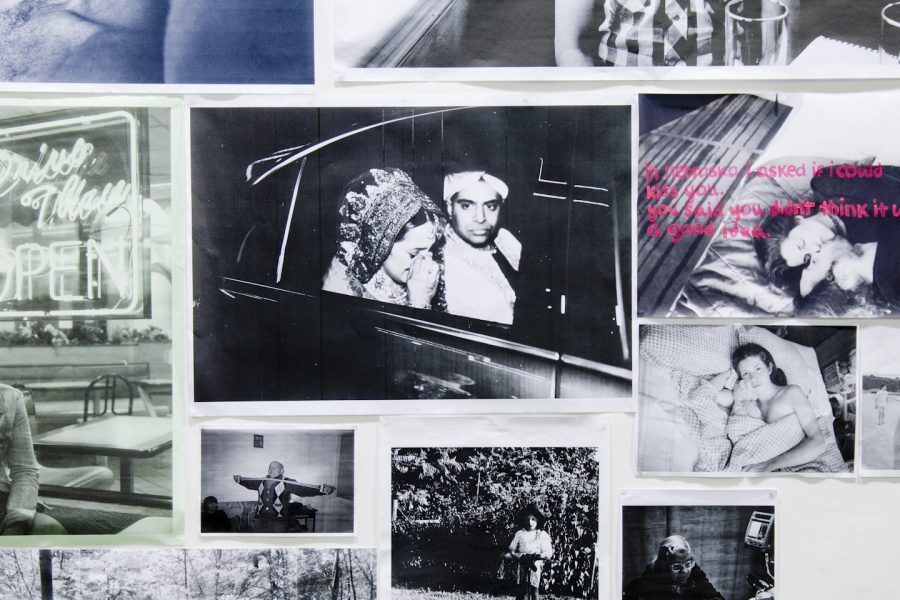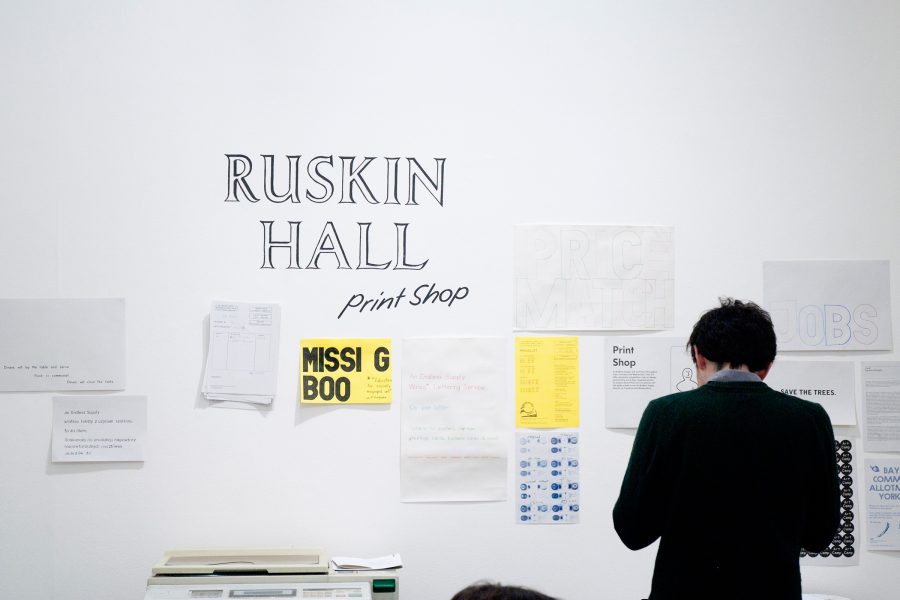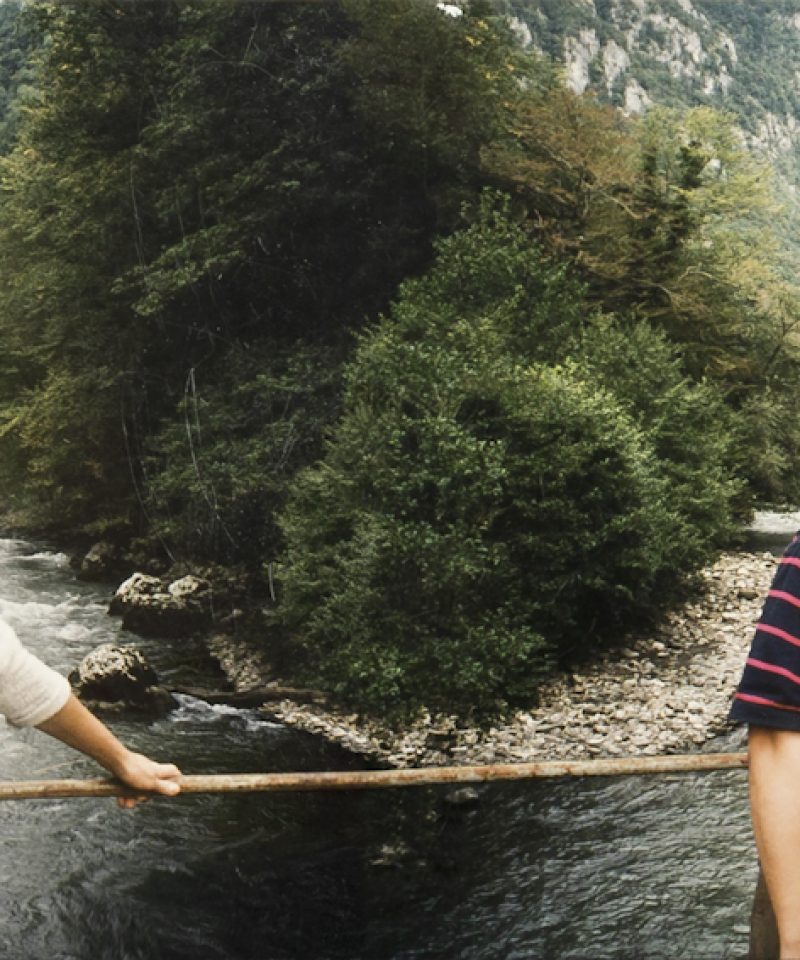George Vasey caught up with Jonny Briggs in his studio to talk about his work and inclusion in the Family Politics exhibition, curated by Photoworks at Jerwood Space, London.
I haven’t prepared any questions!
We can just chat and see where the conversation leads us…
Okay, so you’re really interested in psychology?
Yeah, I studied it at A Level. After that I’ve focused a lot on psychoanalysis. I’m really fascinated by it. It’s beyond an interest really, it’s like an interest in my interest, which can be more interesting than interest itself.
Wow! That’s a quote and a half, although i’m not really sure what you mean…
Haha, I wouldn’t say that my interest inspires the work – but its more like it lets me know where the work is coming from – in some ways I see my inspiration as my interest.
A reflexivity?
Yeah, it helps me figure out what my mind is trying to do.
Do you view the theory as a type of framework, that structures your practice?
Yes, although the work does happen first, then I read around it afterwards. I’m just trying to figure out who I am really.
When did you start making work about your family?
Ten years ago. As soon as I was on the foundation course starting out, it just made sense – ideas kept flowing when I was working with my family. It’s what I know and so embedded in me. We were a very close family, living very rurally in the woods – I grew up in a bubble. I’ve become really interested in names. My Grandma had a dog called Simba who died, so she went out and got the exact same breed and also called the dog Simba. There is a need for keeping the family close.
And continuation, a way of outliving your own mortality, keeping part of yourself in the world.
Yeah, the passing on of tradition.
That happens through photography very clearly. This normative and traditional representation is constructed through photography. You told me that your dad was always taking photographs of you as a child?
Yeah, he was a keen amateur, I think he is a quiet man and photography was a way for him to get involved. There was this bottling of emotion, and this is why the family photo really resonates, this ideal staged scenario. Where for a moment you have to stand and look a particular way at key moments. But i’m interested in giving other things a voice too, that need to be spoken about and represented.
Well, this comes back to you your interest in psychology.
Yeah, I’m interested in what is suppressed, looking back at my ancestors, seeing the world through their eyes. I often felt quite displaced when I was growing up.
Was it an artistic background?
Not so much, but I was really interested in ideas and I became a vegetation in late childhood. There were several ways that I realised that I was a bit different. I became quite solitary. I had four older sisters which probably had an impact on it.
Was there a point where you really wanted to go to art college?
Yeah, It was always my favourite subject at school. I actually went to study architecture as I thought that was more of a route into a career. In my one year at college I designed a cheese farm for a farmer on top of a prostitutes grave yard in Southwark. I was learning all about cows, and it was really abstract. I realised quite quickly that I wasn’t really an architect.
You were making a conceptual installation!
So I transferred to art college, and I loved every moment of it. It was such a relief that I could do anything as an artist, I wasn’t restricted.
Could you take about the sculptural elements in the work?
Yeah, my dad’s head! It is milled from a 3D file.
So it’s your dad’s profile on the outside then you enclose it over your own face?
Yes, the profile on the inside is shaped for my face – it’s also shaped to make me smile.
In your work you often invert the relationships and assumptions…
Like a role reversal. I’m interested in the work looking like i’m caring for him yet we could also be in conflict.

Your dad in this image looks infantilized.
This gesture recurs in another work also – where I’m cradling my dad.
The outsized wooden head feels both empathetic and disconcerting.
Yeah!
I think this is the conflict, which ties your work to a surrealist tradition.
I’m interested in subverting a notion of the ‘normal’ that I was socialised into. I was talking to someone the other day, and they made a startling observation. They noted that my dad’s name was Norman, and I talked about this idea of ‘normal’ a lot. It was if I had conflated the two in my head so they then represented the same thing. Your parents become agents of society, they socialize you, and its only in late adolescence that you start to learn about different versions of your self.
That is what adolescence is about, your identity becomes more fluid and you take on different roles until you find something that you can inhabit.
When I was a teenager I didn’t really rebel. I think that sometimes I’m now living through that somehow in my work.
How did your dad respond to the work?
Silence. He’s quiet, he doesn’t really say anything.
Of course, when you talked anecdotally about the woods growing up you start to understand the significance of the rural symbolism in your work.
I’m interested in how objects and places become embedded in histories and myths. I was thinking a lot about the placement of the hands, onto my own and how my dads are mirrored.
I saw your bodies as interlocked yet somehow oppositional.
There is this similarity and difference between my dad and me. We’re so different. I remember a moment when I was in my early twenties and I was sitting in the front room with my dad, and I noticed we both had the same body language – so I changed the way I was sitting – it was really weird! Anyway, I’m really interested in anthropology and ethnography, learning about other cultures. I’ve been researching around loss recently.
It’s interesting when you talk about this idea of loss, because I read the sculpture of your dad face as a form of death mask. I wonder whether there is an oedipal gesture there somehow, inhabiting your dad…
It’s like a possession, which has a lot to do with belonging…
About taking control over a narrative by possessing it, you talk very clearly about that feeling of alienation until you decided to become an artist and claim that narrative. So, in terms of the tapestries that you are showing at Jerwood Space, how do they relate to this other body of work?
They feel very different. Although I think they are getting at the same thing from a different place. They all help me to get at what I’m exploring.

How are the tapestries made?
They are photographs montaged with drawings, and then digitally programmed in to a SINGLE-bed Jacquard loom. There is only two in the country, and one of them at the Royal College. I make them and then unpick parts of the image so they start to fray.
The image looks like a photocopy, really degraded.
Yeah, or a shroud.
There is something about the erasure of identity. You pick open the weave and the degradation of the weave makes it difficult to discern who the figures are. They become archetypes.
I like all the frayed edges, pinning them to the wall really modestly. It makes me think about different relationships to loss again. Some cultures are interested in permanence where other favour the idea of ephemerality. In the Victorian era, they would cut the hair of the dead and weave it into a small decorative items. The object is charged with something directly from the body of the deceased.
Do you see the works as collaborations?
Perhaps, certainly not in terms of ideas, but I often think of the photographs as documents from private performances.
Do you see the work as cathartic?
To an extent, it’s important that the people in the work feel safe, and protected when making the work.
They become the first audience in a sense for the images? Do you see the work as a type of fiction?
I used to say that the images were constructed as fictions, but in fact it is just another reality – it is two versions of the truth positioned next to each other.
That seems like a good place to leave things!





